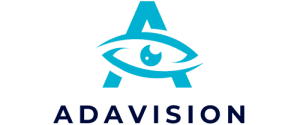Optimize your workflow with prepress tools for packaging

Prepress for packaging is an important step that bridges the gap between graphic design and the printing of packaging materials. This process encompasses a broad range of tools and technologies aimed at ensuring the optimal production of packaging. It involves preparing visual files through precise technical adjustments, such as image retouching, color management, visual shape corrections, and adapting to the specific needs of printing methods like flexography. Layout software, combined with hybrid and digital devices, ensures smooth operation throughout the production process, guaranteeing flawless quality for the final products.
Each software developer specializing in prepress for packaging offers innovations that optimize the creation of plates or sleeves necessary for inline and off-line printing. These methods also control the entire graphic chain, from text adjustments to ink overlap management, to meet the demands of consumers and industries. With advanced software solutions, prepress ensures precise and efficient printing, contributing to the enhancement of products and the evolution of packaging techniques.
A lire également : How Should UK Specialty Chefs Use Podcasts to Share Culinary Tips and Drive Restaurant Visits?
Color management in prepress packaging
Color management is a critical step in the prepress workflow for packaging, ensuring visual fidelity between graphic creation and the final print. Digital files in RGB, optimized for screens, must be converted to CMYK, the color mode used for printing. This conversion is essential for achieving accurate hues and relies on sophisticated software and advanced devices that integrate ICC profiles (International Color Consortium). These profiles calibrate monitors, printers, and presses, ensuring consistency between the colors displayed on the screen and those printed on the products.
Thanks to these techniques, color retouching, brightness correction, and contrast management guarantee optimal graphical resolution for each file. By optimizing colorimetry, prepress enables the production of packaging that aligns with consumer expectations while adhering to industrial constraints, such as those in flexographic printing. These technical and innovative options contribute to enhancing the visual resolution of products and their commercial impact.
A découvrir également : How Can UK Culinary Schools Use Instagram Carousels to Attract Aspiring Chefs?
Proofing : an essential validation for satisfactory printing
Proofing is a vital step in prepress packaging, validating the final output before the printing of packaging. The available methods offer several options tailored to the needs of different industries. Digital proofing, performed in PDF format, allows for a quick and cost-effective check of files, ideal for online adjustments. Calibrated plotter proofs, on the other hand, use the specific profiles of printing presses to ensure better color accuracy and detail fidelity.
Finally, physical proofing, performed directly on press with the final inks and materials, provides a realistic preview of the finished product. While this method is more expensive, it is indispensable for complex or high-value projects, where packaging durability is critical. These proofing systems allow for the identification of potential errors and adjustments to graphic files before the creation of plates or clichés. By integrating innovative proofing options, prepress professionals optimize workflows and enhance consumer satisfaction.
Path control : ensuring precision in packaging
Path control plays a fundamental role in the prepress phase, ensuring that every packaging design meets both visual and technical requirements. Operators meticulously check various types of paths to ensure perfect label printing and proper volumetric alignment. Key areas include:
- Cutting lines : These define the precise contours of the packaging, indicating where the material will be cut.
- Bleed lines : Extending slightly beyond the cutting lines, these prevent unwanted white edges from appearing on the printed packaging.
- Safety zone Lines : These outline the area where all visual and textual elements must be placed to ensure their visibility on the final product.
- Folding lines : These indicate the areas necessary for folding, creating the final shape of the packaging.
By using specialized software, operators adjust visual documents to avoid errors and ensure impeccable results during both printing and mass production. Each software solution also verifies margins and alignments, which are essential for graphic design and ensuring the quality of the final products.
Collaborative platforms : optimizing the process workflow
Collaboration is a key factor in the success of prepress packaging projects due to the variety of stakeholders involved, including design agencies, marketing departments, printers, and publishers. Collaborative platforms centralize communication, facilitating the management of graphic documents and proof approvals (B.A.T.). These digital tools allow real-time tracking of project progress, managing document versions, and enabling feedback exchanges among stakeholders.
For example, agencies upload their documents to the platform, prepress operators make necessary adjustments, and printers download the approved B.A.T. to begin production. These systems minimize the risk of errors, such as using an incorrect version of a file, and improve the efficiency of processes. By combining new technology with efficient management of digital resources, collaborative platforms optimize each stage of the graphic process, ensuring high-resolution packaging production.
Technological innovation : a major asset for prepress packaging
Technological innovation continuously transforms the prepress packaging sector, providing increasingly powerful tools and software to meet client and market demands. Hybrid options combine desktop publishing software, workflow control systems, and quality control devices to optimize each step of the production process. These hybrid solutions streamline graphic creation, automate repetitive tasks, and ensure consistent performance for the final products.
Modern hybrid digital devices, such as plate calibration and control software, ensure rapid and precise manufacturing, reducing the time and costs associated with errors. Thanks to these advancements, manufacturers can manage their resources efficiently and design innovative packaging and labels that stand out in the marketplace. By integrating each technical solution into the process, companies enhance their competitiveness and meet the growing consumer demand for quality, efficiency, and innovation.
Innovative tools for prepress packaging
Innovative devices play a crucial role in the prepress packaging process, offering significant added value in the design and manufacturing of flexographic packaging. Advanced image retouching software allows operators to enhance visuals while adhering to consumer requirements and optimizing documents for both digital and physical media. These technologies provide high precision in color retouching, correction, and optimization, ensuring a flawless print on both packaging and digital formats.
Another major innovation is 3D modeling software, which provides users with the ability to visualize and analyze packaging shapes from a highly realistic perspective. This advanced tool enables detailed examination of structural designs, helping identify potential issues with form, fit, or aesthetics before production begins. By allowing adjustments during the early stages of development, 3D modeling significantly reduces the risk of costly errors, improves design precision, and accelerates the overall packaging development process.
Each digital solution is further enhanced by sophisticated packaging workflow control platforms. These platforms centralize all aspects of the prepress workflow, streamlining communication and ensuring seamless collaboration between various stakeholders, including design agencies, graphic publishers, and printing companies. By integrating real-time updates, file version tracking, and feedback loops, these platforms not only optimize efficiency but also minimize errors, ensuring that every step of the process contributes to the production of high-quality, market-ready packaging.
Every software solution, blending durability and efficiency, enables manufacturers to streamline costs, improve production chain performance, and reduce market launch times. This meets the increasing demand for flexibility and innovation in the packaging sector, allowing businesses to remain competitive and responsive to customer expectations.
